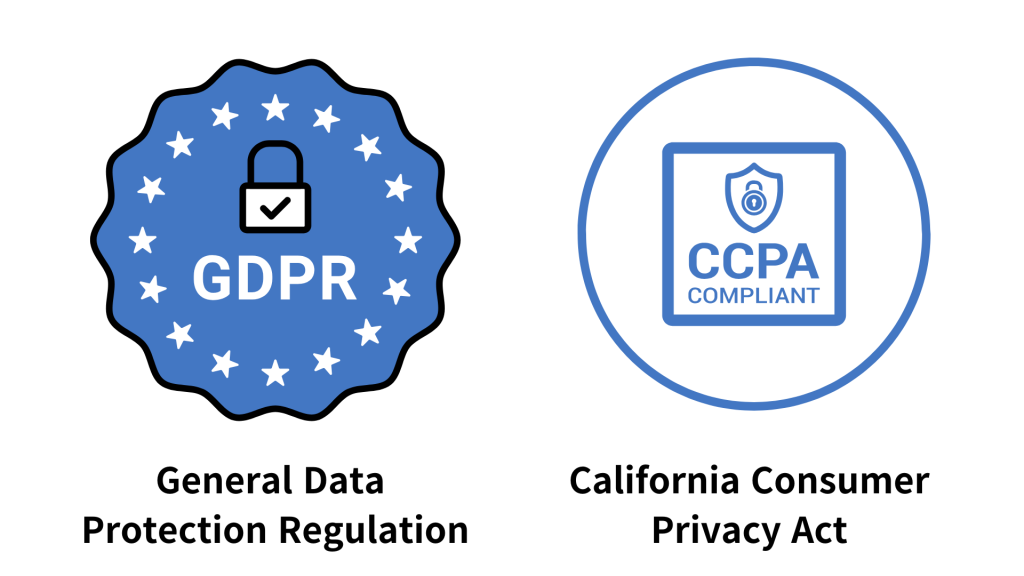In-app messages are one of the most powerful tools for engaging users, enhancing app experiences, and driving conversions. With a median opt-in rate of 51% on iOS devices and 81% on Android devices (Business of Apps), companies can leverage in-app messages to reach users in real-time. However, with heightened privacy regulations like the General Data Protection Regulation (GDPR) and the California Consumer Privacy Act (CCPA), ensuring that in-app messages comply with privacy standards has become essential for building and maintaining user trust.
Non-compliance can lead to substantial fines and reputational damage, underscoring the importance of privacy-first approaches in user engagement. By adhering to privacy standards, companies not only protect user data but also demonstrate a commitment to transparency and responsibility, fostering trust that can enhance long-term user relationships when launching in-app messages. This post explores seven best practices for balancing engagement and privacy in your in-app messaging strategy.
Why User Privacy Matters
Direct and often perceived as personal, in-app messages can make or break user trust depending on how privacy expectations are managed. According to the Cisco 2022 Consumer Privacy Survey, 76% of consumers are more likely to trust brands with clear privacy practices, highlighting the importance of privacy in user relationships. A privacy-compliant messaging strategy considers the user’s right to control their data, security, and transparency, as required by laws like GDPR and CCPA.

Seven Best Practices for Privacy-Compliant Messaging
• Transparent Data Collection and Usage
Clearly communicate why user data is being collected and how it will be used in messaging. Transparency aligns with GDPR requirements and fosters a trustworthy brand image. According to the ICO’s Right to Erasure guidelines, users have the right to request the deletion of their data, underscoring the need for clear data policies.
• Permission-Based Messaging
Obtain user consent before sending personalized or behavior-triggered messages. This step is essential for GDPR compliance, which mandates explicit consent for collecting and using personal data in this way. Respecting user privacy by obtaining permission helps build trust, showing users that their preferences are valued and enhancing long-term engagement.
• Data Minimization
Limit data collection to only what’s necessary for the intended purpose. Minimizing data helps reduce privacy risks and makes compliance easier to manage. By focusing on collecting essential information only, companies can lower their exposure to data breaches and ensure that they align with privacy regulations like GDPR, which advocates for data minimization as a core principle.
• Offer ‘Do Not Show Again’ Options
Providing options to dismiss or permanently disable certain messages respects user choice and creates a more personalized experience. According to Studio Mosaic, 70% of consumers are more likely to continue using an app when they have control over notifications, which improves user trust and retention.

• Secure Data Transmission and Storage
Use robust security protocols to protect data during storage and transmission, such as encryption and secure servers. These measures are essential safeguards for maintaining user privacy and reducing vulnerability to data breaches.
• Easily Accessible Privacy Settings
Make it simple for users to adjust privacy settings or withdraw consent. Providing accessible options for privacy reinforces user trust and encourages engagement, as users are more likely to feel in control and secure within the app environment.
• Regular Privacy Audits
Conduct regular audits of your messaging practices to ensure ongoing compliance and alignment with evolving standards. Privacy audits help maintain user privacy and can identify new ways to protect data, ensuring that your strategy remains effective and trustworthy.

Building Trust Through Privacy-First Messaging
By following these best practices, companies can leverage in-app messaging to engage users while respecting user privacy and regulatory standards. Not only does this approach ensure compliance, but it also strengthens user trust by showing a commitment to transparency and data protection.
For further reading on GDPR compliance, check out resources like the GDPR Compliance Checklist for Your Messenger and GDPR Compliance for Apps.